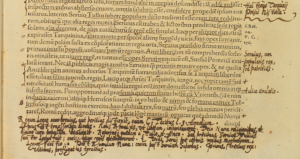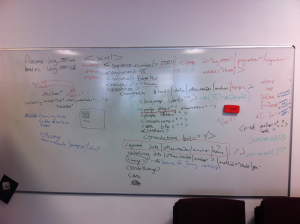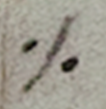Getting started!
This is the first of many blogs to be written by members of the Archaeology of Reading (AOR) project. The blogs will deal with various aspects of the project, such as the scholarly and technical questions we face on a daily basis, and aims to offer a look behind the curtains. So stay tuned for regular updates!
One of the first questions that needed answering at the start of the project was how to capture all the annotations made by Harvey, a prolific annotator. Indeed, Harvey, can be considered some sort of a prodigy when it comes to annotating, as he not only wrote comments in the margins of the pages but also made use of an elaborate system consisting of symbols and non-verbal marks.
In order to get an idea and an overview of Harvey’s “annotation system,” in February 2014 some members of the team, including Earle Havens, Matt Symonds, and Jaap Geraerts, traveled to the Princeton University Library, which owns a number of Harvey’s books that have been digitized and incorporated into this project. In snowy Princeton, where we received a warm welcome from the rare books librarian and our project collaborator, Stephen Ferguson, we spent a happy week examining Harvey annotations and inventorying the interventions he had made in the texts.
A little bit in advance of the official start of the project, we started thinking about the best way to capture Harvey’s annotations in XML, a machine-readable mark-up language that allows us to engage with the transcriptions we are making of all the annotations in each of Harvey’s books. The development of the XML schema, as it is called, was very much an incremental process and led to frantic drafting on the blackboard in the Centre for Editing Lives and Letters (CELL) office in London.
This project is a collaborative effort on the part of rare book librarians and curators, historians of early modern Europe, and IT-specialists, and after a couple of discussions with the team members from Johns Hopkins University (JHU), the schema was deemed to be ready, and we could actually start with the transcriptions! Harvey, however, continues to amaze us, and from time to time new marks are ‘discovered’, making it necessary to update the XML schema. For example, James Everest, our former research assistant at CELL, who’s now busy finishing his PhD, encountered a mark that looks like this:
Our trusted Dictonario di Abbreviature Latine ed Italiane taught us that this mark means “est” or “id est,” hence it was christened “est_mark” and included in the schema. Harvey thus continues to challenge the schema, and we will keep you posted about new discoveries!



